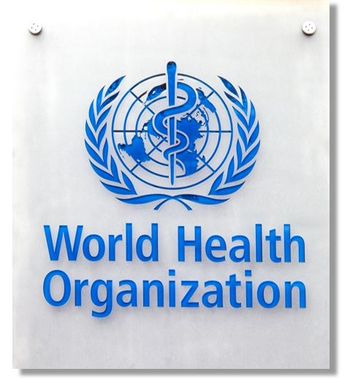
News You Can Use: Can an Apple (or Orange or Banana) a Day Keep the Ophthalmologist Away?
Age-related maculardegeneration(AMD) isthe leadingcause of untreatedvision loss amongpersons 65 years andolder and accounts for 45%of all visual disability inthe United States.1 Thiscondition usually has significantadverse effects onquality of life.2 As the USpopulation continues toage, the number of Americanswith AMD is expectedto increase.3
Age-related maculardegeneration(AMD) isthe leadingcause of untreatedvision loss amongpersons 65 years andolder and accounts for 45%of all visual disability inthe United States.1 Thiscondition usually has significantadverse effects onquality of life.2 As the USpopulation continues toage, the number of Americanswith AMD is expectedto increase.3
RISK FACTORS
Because pharmacologicand surgical treatmentoptions for AMD arecostly, are limited in scopeand efficacy, and may resultin complications assevere as end-stage disease(scarring of the macula),prevention of AMD isdesirable. Modifyingor eliminating risk factors(Table) may be helpful.Besides older age, unmodifiablerisk factors includefamily history, femalesex, and ocular characteristicssuch as light-coloredirides.4 Several geneshave been identified for diseases with features thatoverlap with those ofAMD, but none of thesegenes account for a significantpercentage of casesof AMD.
Modifiable risk factorsinclude smoking;cumulative exposure tosunlight or short-wavelengthblue light; longtermuse of photosensitizingmedications; excessiveintake of dietary fat;obesity; hypertension;lack of exercise; and othercardiovascular diseaserisk factors, such as elevatedcholesterol levels.4-7
DIETARYINTERVENTIONS:CLINICAL TRIALRESULTS
Dietary modificationand supplementation maydecrease the risk of AMD.The Eye Disease Case-Control Study showed thatAMD was less likely to developin patients whosediets were rich in greenleafy, yellow, and orangevegetables--that is, foodswith high levels of antioxidantcarotenoids.8 In apilot study, zinc supplementationwas found to reducethe risk of AMD-associatedvision loss.9 Subsequently,the Age-RelatedEye Disease Study(AREDS), a large, longterm,multicenter, randomizedtrial sponsored by theNationalEye Institute, showed thatsupplementation with highdosevitamins C and E,beta-carotene, zinc, andcopper reduced progressionto advanced AMD by25% during the course of5 years among those withsigns of intermediate oradvanced disease in oneeye.10
In a more recentstudy, investigators examinedthe effects of antioxidantvitamin and carotenoidsupplements, as wellas fruits and vegetablesknown to be rich sourcesof antioxidants, on the developmentof AMD.11They followed the diets of77,562 women for up to18 years and 40,866 menfor up to 12 years. The participantswere at least 50years old and had no signsof cancer or any form ofAMD at baseline. Duringthe course of the study,early, or "dry," AMD wasdiagnosed in 329 womenand 135 men (based onthe presence of drusen orretinal pigment epithelialchanges) (Figure 1).Neovascular, or "wet,"AMD was diagnosed in217 women and 99 men(based on retinal pigmentepithelial detachment,choroidal neovascularmembrane, or disciformscar) (Figure 2). AMDwas diagnosed when patients'visual acuity deterioratedto less than 20/30.
Wet AMD was 36%less likely to develop inthose who consumed 3 ormore servings of fruit perday than it was in thosewho consumed fewer thanan average of 1.5 servingsper day. Among the fruitsstudied, only oranges andbananas showed a statisticallysignificant protectiveeffect. The effect appearedto be similar for men(43% decreased risk) andwomen (33% decreased risk).
No protective link wasfound between fruit consumptionand dry AMD,which may have a causeother than wet AMD. A relationshipwith dry AMDmight have been identifiedhad the examiners usedadditional criteria to measurefor this condition,such as contrast sensitivityfunction and glare recovery.12,13 Consumption ofvegetables, carotenoids, orantioxidant vitamins wasfound not to be stronglyrelated to a reduced risk ofeither dry or wet AMD.
The Lutein AntioxidantSupplementationTrial (LAST) was a prospective,12-month, randomizedstudy involving90 patients with dryAMD.14 Lutein is the primarydietary carotenoidxanthophyll pigment responsiblefor macular pigmentoptical density; itprotects against AMD byabsorbing light and eliminatingfree radicals.15Lutein intake and highmacular pigment opticaldensity are believed toplay both preventive andtherapeutic roles in optimaleye health.16 The researchersfound that patientswho took lutein supplementsimproved inseveral objective measuresof visual function. Patientsalso experienced an increaseof approximately40% in macular pigmentoptical density, whereasthose who took placeboexperienced no increasesin any of the domainsstudied.
In a presentation atthe 2004 meeting of theAssociation for Researchin Vision and Ophthalmology,a new analysis ofbaseline data collected inAREDS participants suggestedthat lutein protectsagainst both wet and dryAMD.17
A POSSIBLE ROLEFOR STATINS
The progression ofdry AMD to the more severewet form usuallyleads to severe deteriorationin a patient's vision.Preliminary evidence froma recent retrospectivestudy of persons withAMD who had takenstatins suggests that thesedrugs reduce the risk ofprogression from dry towet AMD.18 Participantswith the wet form of AMDwere statistically less likelyto have used statins forat least 6 months thanthose with dry AMD. Theresearchers also foundthat patients with wetAMD were significantlymore likely than thosewith dry AMD to havehigher serum triglyceride levels and lower serumhigh-density lipoproteincholesterol levels andmore likely to be currentsmokers. Patients withwet AMD were less likelyto be aspirin users thanthose with dry AMD. Theresearchers concludedthat evidence from thisstudy supports the hypothesisthat a commonmechanism is responsiblefor both cardiovasculardisease and wet AMD.
Newsletter
Enhance your clinical practice with the Patient Care newsletter, offering the latest evidence-based guidelines, diagnostic insights, and treatment strategies for primary care physicians.



















































































































































































































































































